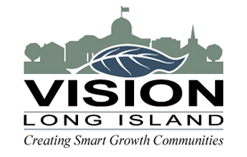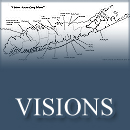Principles of Smart Growth and Livability
Recognizing the intrinsic relationship between economic vitality and quality of life, Vision Long Island seeks to improve the livability, sustainability, and economic vitality of Long Island and all its neighborhoods by encouraging land use planning and design concepts that emphasize neighborhood and community. In this, we advance processes that encourage the participation and cooperation of all stakeholders, draw on local expertise and model successes in communities around our nation. We seek to provide a foundation for present and future land use decisions, and to establish coherent plans, regulations, procedures, and practices within government agencies and the private sector. Working together, we can establish best practices of land use and ecosystem management.
Our principles were originally assembled with guidance from the United States Environmental Protection Agency, Local Government Commission, Urban Land Institute, Sustainable Long Island, as well as our own extensive research and hands on experiences across Long Island.
VISION Advances:
1. Comprehensive land use planning that is ongoing, community-based and consistent with the needs and objectives of the local community, adjacent communities, and the region as a whole.
2. Development that contains a mix of uses essential to the daily life of its residents, which includes housing, shops, work places, schools, parks and civic facilities situated ideally within easy walking distances of each other or otherwise within short travel distances.
3. Land uses that links economic development decisions with environment and quality of life, and protects the property values of its residents.
4. Efficient development that is pedestrian-friendly, is attractive, reduces automobile dependency, provides transportation alternatives, and is focused around existing or newly designed transportation centers.
5. Development that enhances existing communities, and which particularly targets downtown and neighborhood centers for expanded or new development. Development should also be directed toward areas of existing infrastructure can be upgraded or redeveloped, rather than toward areas of open space and, when consistent with the community goals, include the recycling of existing structures.
6. A sufficiency of housing to meet the needs of residents, and which includes a natural diversity of housing types and facilities to enable citizens from a wide range of age groups, ethnic backgrounds, and economic levels to live within neighborhood boundaries and to interact.
7. Planning, decision-making, and development practices that emphasize extensive and broad-based community participation, dialogue, use of visual models, consensus building and envisioning.
These Practices Will Result In:
-
Protection of open space and the environment
-
Strengthening of the local economy
-
Improved sense of community
-
Decreased or stabilizing auto congestion
-
Reduction in auto dependency
-
Preservation of historic structures
-
Enhancement of community character and aesthetics
-
Efficient use of public money
-
Safe and secure communities
-
Improvement in overall quality of life









